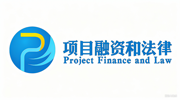Millennial Potash eyes major role in fertilizer market with Banio project
Last updated: 16:15 24 Jul 2024 BST, First published: 16:08 24 Jul 2024 BST

Millennial Potash Corp (TSX-V:MLP, OTCQB:MLPNF) is making significant strides in the potash industry with their latest venture, the Banio project in Gabon.
Potash, essential for fertilizer production, is currently facing global supply disruptions, exacerbated by sanctions on Belarus, a major producer alongside Russia. This has led to a shortage, prompting countries to seek alternative sources.
As potash is vital for fertilizer production, Millennial’s Banio project addresses current global supply disruptions and rising prices, offering a stable and strategic supply source.
Strategically located on Africa’s Atlantic coast, Banio boasts 1.7 billion tonnes of indicated and inferred resource of potash covering only 1% of the entire property. This potentially large deposit positions the company as a significant potential supplier to markets in Africa, Brazil, Europe, and Asia.
A knack for potash
Chairman Farhad Abasov and the Millennial team have a proven history in the potash sector.
“This is our third potash project. Our first two projects, Potash One (TSX:KCL) in Saskatchewan and Allana Potash in Ethiopia, were both developed and sold successfully,” Abasov told Proactive.
Allana Potash was taken from a $5 million market cap to a $170 million sale to ICL, an Israeli potash producer. Similarly, Potash One (TSX:KCL) was sold to German potash producer K+S for about $430 million.
Prior to Millennial Potash, Farhad Abasov, Graham Harris, Peter Maclean, Rick Lacroix and the team were part of a different Millennial – Millennial Lithium (TSX-V:ML), which it built from a $40 million company to a $490 million sale to Lithium Americas after Lithium Americas outbid Ganfeng Lithium and CATL in a bidding war.
Gabon is an ideal location for Millennial to develop the project and provide end users with its product. “Gabon is probably one of the wealthiest countries in Africa on a GDP per capita basis,” Abasov explained. “They are an oil and gas producer and are now opening up their mining sector, in a bid to diversify away from oil and gas.”
Keeping capex low with sustainable exploration
What sets Banio apart is significant historical exploration. The project has seen two major exploration programs, one in the 1970s and another in 2017 to 2018. “In both cases, they intersected very healthy potash horizons, which is what we liked,” said Abasov. The exploration has revealed a resource of 1.7 billion tonnes of potash based on just two drill holes, covering less than 1% of the property’s total area of over 1,200 square kilometers.
Millennial Potash’s approach to extraction is solution mining, which offers both cost and environmental benefits. “Solution mining keeps your capex low because you just drill into your ore body, pump saline solution to dissolve potash, and pump the potash-rich brine back up to the surface for processing,” Abasov explained. “This method avoids the need for underground operations, sinking shafts, or excavation.”
In addition to cost savings, solution mining has a minimal environmental impact. “It really makes your permitting process much easier and faster,” Abasov noted. The environmental footprint is significantly reduced, making the project more favorable to local populations and governments.
Banio’s thick potash horizons contribute to its competitive edge. “In many places, if you get to 25 to 30 meters, you’re very excited. Here, at the thinnest part, we get to 70 meters,” said Abasov. “As we go south, the thickness goes up to about 150 to 160 meters.” This substantial thickness translates into lower production costs, positioning Millennial Potash favorably against even the lowest cost operators in the world.
Derisking the project
The company’s estimated operating costs are about $61 per ton, lower than major players like Belaruskali and Nutrien. Its cost profile has already attracted interest from large fertilizer companies and potash producers, according to Abasov. “Since we released the PEA results, we’ve been approached by large fertilizer players who like to get into potash.”
Millennial Potash’s strategy involves bringing in large strategic players to de-risk the project and drive it further. It’s an approach that has proven successful in their previous projects. “With our Ethiopian potash project, Alana Potash, we brought in the International Finance Corporation, which owned about 10% of the stock and provided significant government-level support,” Abasov said.
Currently, the company has raised $2 million through a private placement. Proceeds will be used to fund two new exploration holes, with the potential to significantly increase the current resource estimate of 1.7 billion tonnes. The management and board members collectively are the largest shareholder of the company and participated in the recent financing to maintain their current 30% stake in the company.
Banio presents a compelling value proposition for investors. Its NPV after tax, with a 10% discount rate, is over US$1 billion. Right now, Millennial is trading at less than 1% of its NPV.
Leveraging a proven track record, innovative solution mining technology, and strategic partnerships, the company is poised for substantial growth. “So far, the project has shown to be very strong and, frankly, has much better economics than we’d expected,” Abasov said.
By tapping into the agricultural sector’s needs, Millennial Potash’s project has the potential to become a key player in enhancing global food security, making it an attractive opportunity for a diverse range of investors.






